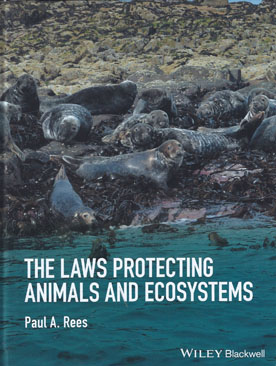We are now closed for the Christmas and New Year period, returning on Monday 5th January 2026. Orders placed during this time will be processed upon our return on 5th January.

There is currently no basic text in wildlife law suitable for the wide range of courses in wildlife conservation and animal welfare at both bachelors and masters level, or for the large number of people who work in conservation and animal welfare.
The Laws Protecting Animals and Ecosystems fills the gap in this significant market for a basic law text applicable to students and professionals whose primary training is in biology but who require a basic understanding of the laws relating to the protection of animals and ecosystems.
The text is applicable to a wide range of subjects, including wildlife conservation, animal handling, animal welfare, animal husbandry, and veterinary science.
This foundational text supports those studying animal and ecosystem law by providing an overview of the basic legal principles, national and international laws, terminology, the legal mechanisms used to protect animals and ecosystems, and a compendium of the major animal welfare and conservation laws in major English speaking countries.
Dr. Rees, senior lecturer in the School of Environmental and Life Sciences at the University of Salford, has been teaching wildlife law for 20 years and ecology for over 35 years and is ideally placed to write this book.